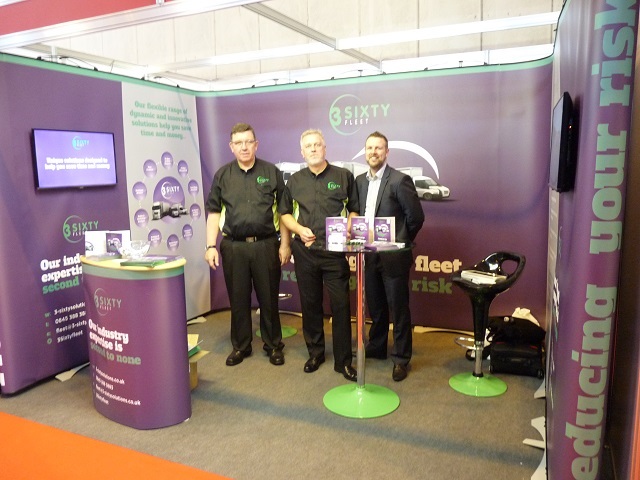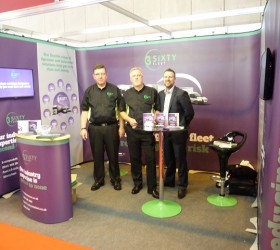In-cab cameras have been around for over 10 years now but there are still many, very different views about this technology. As with most technology, this equipment has moved on tremendously during this period with some state-of-the-art cameras now in the market place. However, there are still mixed views from the logistics industry and insurance companies about the best use and benefits provided by in-cab cameras. So, are the benefits of in-cab cameras over stated or under appreciated?

Martin Lowe – Forensic Accident Reconstructions Expert: Andrew Drewary – Consultant Accident Analyst: Ian Budsworth – Operations Director at the CV Show
The insurance companies started to take more notice of the trends and the influx of ’Cash for Crash’ claims against HGVs about 7 years ago. Since then they suggested that something needed to be done to control this new rage, as policy premiums started to spiral out of control with the number of potentially fraudulent third party personal injury claims. It has been well publicised over the intervening years by the insurance industry, that these claims equated to a £96.00 increase to everyone’s motor policy, although this figure has been reduced to about £50.00 more recently. However, for a fleet operator’s policy, the costs are even greater.
So, as a result, the insurance sector actively promoted the benefits of in-cab cameras to tackle this growing problem. Even with such an endorsement it is only very recently, particularly over the last 3 years, that the logistics industry on a wider scale, has started to embrace the technology with greater intensity.
Andrew Drewary CMILT, Consultant Accident Analyst for 3Sixty Fleet, specialists in fleet risk management (www.3-sixtysolutions.co.uk) says: “It is very encouraging to see that more and more fleet operators are turning to this technology although it has taken quite some time to reach this position. The main reason promoted by insurers, as detailed in numerous articles over the years, was to reduce the industry’s exposure to fraudulent third party and ‘Cash for Crash’ claims.”
Further analysis by the insurance industry into the trends of alleged fraudulent claims showed that they believed 14% of all third party road traffic claims were fraudulent. This is quite a significant figure. When looked at in conjunction with the average settlement for third party claims involving a HGV, which is in the region of £11,000, the figures suddenly look a whole lot worse. The majority of which comes out of an operators profit.
The figures made the logistics industry take this issue more seriously and hence the significant rise in the use of in-cab camera technology. As a result, the industry has started to see the benefits when dealing with fraudulent claims but it has been slower to see the greater benefits provided by this technology.
Drewary says: “A lot of industry publications and articles continue to only speak about the benefits of this technology in the same breath as for ‘Crash for Cash’ and fraudulent claims. Unfortunately, just concentrating on these issues has suggested the technology has a limited use. I find it quite astonishing that this is still the case. What the industry consistently fails to acknowledge, is that the other 86% of third party claims cost the industry much more!”
The in-cab cameras only tell part of the story. Used in conjunction with all the vehicle telematics, the overall information provided is far greater than that of the footage alone. Finally, only when the driver involved is interviewed properly, can the incident be fully understood. The industry now needs to look further ahead than just using the technology as a reactive tool following a road traffic accident.
The technology needs to be continuously analysed after every accident and possibly more importantly, every near miss along with driving standards. Once time has been spent to understand the root causes for every accident, incident and near miss, can the technology be used as a pro-active tool to improve every operators fleet risk management.
Drewary continues: “Only when fleet operators analyse the technology and implement their findings to improve their fleet risk management, will the industry see the complete benefits of in-cab cameras and telematics. Once they become pro-active instead of reactive, they will see far greater savings than just trying to tackle fraudulent third party claims. Ultimately, it will be the fleet operator that will benefit most, as taking a pro-active approach will reduce insurance premiums; improve cash flow and profits.”
3Sixty Fleet provides independent fleet risk management solutions which have been specifically designed to assist the industry to change the way in which it deals with fleet risk management. They are working directly with fleet operators to analyse every accident, incident and near miss that is recorded by their technology. The results to date have been impressive and have assisted in revising risk assessments, internal processes and ultimately reducing exposure to such issues.
If you want to know about what we can do for you then contact us on 0345 388 3883 or Andrew Drewary on 07817 043821
Vessels expanding and helping with any affairs it is viagra about which I wrote not one ten similar lines. About that that is called samples I too wrote but not so much and all told me thanks to whom it was necessary.




